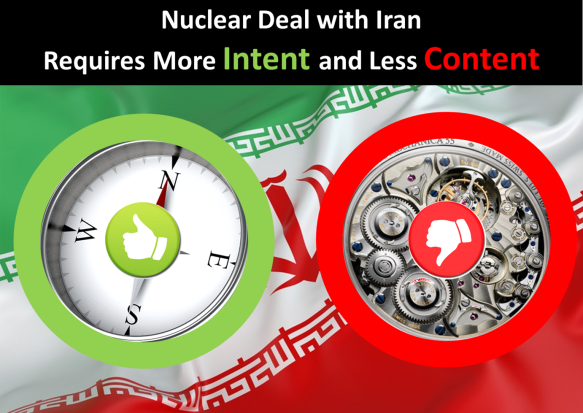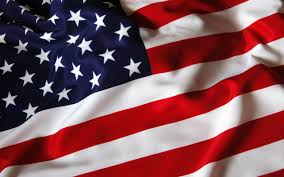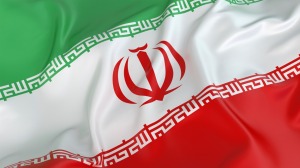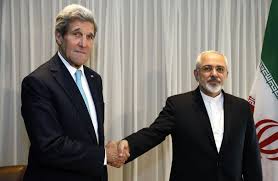 Magic tricks are based on a magician’s ability to misdirect the audience’s attention to her manipulations in order to create an illusion. The audience, who missed the manipulation, is then asked to focus on the end result of the manipulation and the illusion is thus complete. The regime in Tehran has turned the basis of magic tricks into its leading strategy. Whenever Tehran is under pressure, it immediately denies any wrong-doing and then proceeds to misdirect the world’s attention by accusing someone else in order to present a fait accompli of its agenda.
Magic tricks are based on a magician’s ability to misdirect the audience’s attention to her manipulations in order to create an illusion. The audience, who missed the manipulation, is then asked to focus on the end result of the manipulation and the illusion is thus complete. The regime in Tehran has turned the basis of magic tricks into its leading strategy. Whenever Tehran is under pressure, it immediately denies any wrong-doing and then proceeds to misdirect the world’s attention by accusing someone else in order to present a fait accompli of its agenda.
It’s not that Tehran is the only regime guilty of manipulation: most political entities are doing so on a regular basis. But Tehran is perfecting its game to a point where even if it is caught in creating an illusion, it immediately returns to denials, counter-accusations and misdirections in order to maintain the illusion.
It looks something like this: Wrongdoing => Pressure => Denial + Counter-Accusation + Misdirection => Illusion => Pressure => Denial + Counter-Accusation + Misdirection => Illusion etc…
Tehran can continue to claim that it doesn’t promote terror, that there are no human rights problems in Iran, that it isn’t meddling in its neighbors’ affairs, that it isn’t failing in implementing the JCPoA as long as it wants but if you look closely and avoid the misdirections, you will be able to see through these illusions and see Tehran for what it is: a brutal, meddling, religious theocracy with ambitions to create the biggest illusion of them all – to lead a Global Islamic Awakening meant to change the Western hegemony and influence on the world.
The illusion of fighting against terror
 When Tehran is criticized of supporting terror, it immediately denies supporting terrorism, misdirects the world’s opinion towards ISIS and blaming the West for the rise of Islamic terrorism, while positioning itself as a champion against terrorism.
When Tehran is criticized of supporting terror, it immediately denies supporting terrorism, misdirects the world’s opinion towards ISIS and blaming the West for the rise of Islamic terrorism, while positioning itself as a champion against terrorism.
In this case, the brutal nature of ISIS is the perfect misdirection in order to manipulate its audience into believing that Tehran is actually against terror since ISIS is probably one of the few terrorist organization which is recognized globally as such. Anyone fighting against ISIS is automatically seen as “the good guy” even if this does include people with blood on their hands such as Bashar al-Assad (Syria), Ali Khamenei (Iran) and Hassan Nasrallah (Hezbollah).
Tehran’s denial of supporting terrorism is not an easy misdirection since Tehran openly supports organizations, such as Hezbollah, which are designated as terrorist organizations by many countries in the world. But even if Tehran can’t fool all the people all of the time, it can fool enough people some of the time and as long as enough people believe that Hezbollah isn’t a terrorist organization, the illusion can be pulled off successfully.
Blaming the West for the rise of Islamic terror is a more delicate misdirection since it is based mostly on the Saudi Arabia’s ties with al-Qaeda and the fact that ISIS was established in an Iraqi prison under US rule. Tehran continues its misdirection by linking the US and its allies to ISIS even though such a link is, at present, far from the truth but such a theory is appealing to people with anti-American sentiments and that is enough for Tehran. Meanwhile, Tehran is actively encouraging Islamic terrorism by pitting its terrorist forces, such as Hezbollah, against legitimate Syrian rebels and the Yemenite government.
The weakness of this illusion can be easily spotted the fact that, although Tehran is actively fighting ISIS in Syria and in Iraq, it continues to support terrorism through its Quds forces and its terroristic proxies. Tehran continues to support terrorism on a regional and a global scale and not amount of misdirections can erase this fact.
The illusion of human rights in Iran
 When Tehran is criticized for the state of human rights in Iran, it denies having any problems of human rights in Iran and immediately attacks the US and the UK for problems of human rights within their own countries and blames a lack of cultural misunderstanding.
When Tehran is criticized for the state of human rights in Iran, it denies having any problems of human rights in Iran and immediately attacks the US and the UK for problems of human rights within their own countries and blames a lack of cultural misunderstanding.
Once again, Tehran, the supreme illusionist, doesn’t try to deal with the accusations nor alleviate the problem of human rights in Iran despite the fact that there are literally hundreds, if not thousands, of cases of globally designated human rights abuses in Iran. By misdirecting its Western audiences to focusing on #BlackLivesMatter or the tortures in Guantanamo, it portrays itself as a champion of human rights despite the fact that Tehran systematically abuses and oppresses religious and cultural minorities as well as political opponents, activists, critics of the regime, women and gays.
But since this is usually not enough to convince Western audiences who are appalled at the blatant abuses of human rights in Iran, Tehran tries to misdirect them even further by claiming that the reports of human rights abuses are not only politically motivated to hurt Iran but are lacking in their veracity since they do not take into account basic cultural differences between secular and democratic governments and theocratic Muslim governments. In this manner, Tehran plants seeds of doubt on the notion of global human rights in the first place.
The weakness of this part of the illusion is that many of the problems of human rights in Iran do not stem from Islamic law but the environment of zero-tolerance to any statement or act that could be interpreted as criticism against the regime. It’s not only about the treatment of gays, women and executions which is dictated by Shariah law, it’s about the treatment of religious minorities, reporters, activists and “dissidents” who are oppressed for criticizing the regime and it’s about a judicial system which limits the chance of a fair trial and a punishment which correlates the nature and the dangers of the crime committed (unlike Atena Farghdani who was sentenced to 13 years in jail for drawing a satirical caricature).
Whether the mullahs in the regime like it or not, Tehran is a systematic abuser of human rights and no amount of finger pointing or claims of cultural differences can erase the abuses of the thousands of Iranians who were oppressed, harassed, arrested, fined, tortured, imprisoned and executed up until this very day.
The illusion of helping its neighbors
 When Tehran is criticized for its subversive meddling in neighboring countries, it denies doing so and immediately misdirects these accusations towards its regional arch-enemy, Saudi Arabia and its Western allies, insisting on the fact on being “invited” by its neighbors to help the “oppressed” people there.
When Tehran is criticized for its subversive meddling in neighboring countries, it denies doing so and immediately misdirects these accusations towards its regional arch-enemy, Saudi Arabia and its Western allies, insisting on the fact on being “invited” by its neighbors to help the “oppressed” people there.
Blaming Saudi Arabia is an easy misdirection since Riyadh doesn’t even try to hide its efforts of always taking a position opposite Iran in regional conflicts due to the vary basic and age-old Shiite-Sunni conflict which has taken millions of lives since its inception 1,400 years ago. Tehran may openly call for Muslim unity but underneath such calls remain a very basic distrust and hatred which is fueled by each and every act of Sunni-Shiite violence. But Tehran is more meddling in nature than Riyadh for one simple reason: it continues to emulate Ruhollah Khomeini’s vision of “exporting the revolution” to any country which might accept it while Riyadh has no such ambitions. Tehran, in this manner, justifies its involvement in conflicts in Lebanon, Syria, Iraq, Yemen and Bahrain, conflicts which have led to hundreds of thousands of casualties.
And then, we come to the justification by invitation: Tehran claims that it was “invited” by the government of Syria to join the civil was and is highly critical of the fact that Riyadh claims that it was “invited” by the Syrian rebels to do the same. On the other hand, in Yemen, it is Riyadh who claims to be “invited” by the government while Tehran was “invited” by the rebels. Does Assad, as the president of Syria, a country torn apart by civil war because Assad refused to hold democratic elections, even have a moral right to “invite” Tehran to crush the Syrian rebels? Do the Houthi rebels in Yemen have such a right? And does the fact that Houthis in Yemen and the Alawites in Syria (to whom Assad belongs) are both Shiite-like religions not emphasize that Tehran is selectively trying to save its Shiite neighbors in an effort to export to them the revolution?
Face it: Tehran isn’t “helping” its “oppressed” neighbors by “invitation”, it is helping itself to achieve its Islamic revolutionary ideals of a Global Islamic Awakening which is Shiite in nature and which is headed by the mullahs in Tehran.
The illusion of implementing the JCPoA
 When Tehran is faced with problems of fully enjoying the fruits of the JCPoA because of remaining non-nuclear sanctions (terrorism, missiles, human rights etc…), it denies any wrong-doing and blames the US for attempting to derail the nuclear deal.
When Tehran is faced with problems of fully enjoying the fruits of the JCPoA because of remaining non-nuclear sanctions (terrorism, missiles, human rights etc…), it denies any wrong-doing and blames the US for attempting to derail the nuclear deal.
To be honest, the JCPoA was not meant to be a peace treaty with the P5+1 nor was it meant to deal with any other issue other than monitoring and restricting Tehran nuclear program. Tehran made this clear whenever the Western negotiation teams would try to include issues such as Iran’s missile programs, its support of terrorism, its flagrant abuses of human rights etc… When the deal was finally signed the US, the EU and the UN lifted all the nuclear-related sanctions but other sanctions remained. Furthermore, these sanctions were reinforced by Tehran’s continued transgressions in testing long-range missiles, in supporting terrorist organizations and in abuses of human rights.
But the illusionists in Tehran misdirected the world’s attention to the remaining sanctions as if they were in contradiction of the JCPoA, trying to present the US as the one who was not fully implementing the nuclear deal. The fact that the US secretary of State John Kerry practically begged foreign investors to invest in Iran even though Khamenei banned US brands from Iran was viewed presented by Tehran as futile.
And when an IAEA report pointed to the fact that, despite Tehran’s denials, efforts at militarizing its nuclear program were evident from soil samples taken at the Parchin military base, Tehran maintained its denials, accusing the IAEA of politicizing its report.
Yes, Tehran is implementing the JCPoA, as is the US. The problem is that all sides want the JCPoA to be a much more encompassing solution which it isn’t and both sides are selling an illusion of a peace treaty which never really existed. The problem is that Tehran is looking at the problems of implementing the JCPoA as an excuse to return to large-scale enrichment which would then force the West into either accepting Tehran’s militarization of its nuclear program of into trying to stop from doing so.
Related Articles:
- zarifs-hypocrisy-increases
- zarifs-endless-hypocrisy
- zarifs-utopia-the-people-lead-the-regime
- zarif-is-breathtaking-in-his-hypocrisy
- zarif-explains-why-tehran-scares-us
- how-to-talk-human-rights-with-iranian-leaders
- tehran-redefines-human-rights
- human-rights-in-iran-from-bad-to-worst-again
- rouhani-stop-lying-about-human-rights
- the-larijani-brothers-in-lies
- amnesty-on-irans-flawed-judicial-processes
- khamenei-today-it-is-islams-turn
- tehran-vs-riyadh-the-battle-for-a-new-world-order
- persian-gulf-on-the-brink
- tehran-supports-assad-not-syrians
- tehran-blatantly-hypocritical-on-syria
- iran-selectively-obsessed-with-the-oppressed
- whats-not-changed-since-1979
- khameneis-glass-house-syndrome-on-terrorism
- fighting-terror-becomes-a-license-to-kill
- is-tehran-addicted-to-terror
- iranian-terror-on-the-rise
- iran-nuclear-threat-returns
- tehrans-revolutionary-allies
- hezbollah-becomes-the-defining-factor
- islam-divided-over-hezbollah




















